Dmitry Orlov (Arrêt sur info, 29 octobre 2017)
mardi, 07 novembre 2017
Quel avenir ?...

Quel avenir ?...
par Dmitry Orlov
Ex: http://metapoinfos.hautetfort.com
Nous reproduisons ci-dessous un point de vue de Dmitry Orlov, cueilli sur Arrêt sur info et consacré aux scénarios de l'avenir qu'il privilégie. D'origine russe, ingénieur, Dimitry Orlov, qui a centré sa réflexion sur les causes du déclin ou de l'effondrement des civilisations, est l'auteur d'un essai traduit en français et intitulé Les cinq stades de l'effondrement (Le Retour aux sources, 2016).
Quel avenir ?
J’aime me flatter en pensant que la raison principale pour laquelle tant de gens ont creusé un chemin vers mon blog et continuent à acheter mes livres est que pendant plus d’une décennie j’ai toujours deviné correctement quelle forme prendrait l’avenir ; pas tout le temps, mais suffisamment souvent pour inciter les gens à y prêter attention. J’essaie d’être très prudent dans mes pronostics. Je ne prédis jamais des événements relativement insignifiants tels que les krachs boursiers, les changements dans la composition des gouvernements nationaux et d’autres incidents qui ne se produisent que sur le papier ou sur un coup de tête.
 Au lieu de cela, j’essaie de me concentrer sur les aspects de la réalité physique – les flux d’énergie en particulier – qui limitent la forme de l’avenir. Je ne fais pas non plus de prédiction en ce qui concerne le calendrier : savoir si quelque chose va arriver est souvent une question qui a une réponse ; savoir quand quelque chose se produira est souvent une question pour laquelle aucune méthode ne donne de réponse fiable. En gardant cela à l’esprit (pour ne pas être déçu), je vais prendre quelques risques et faire quelques prédictions sur la forme générale de l’avenir qui se matérialisera au cours d’une seule vie humaine et peut-être même un peu plus vite.
Au lieu de cela, j’essaie de me concentrer sur les aspects de la réalité physique – les flux d’énergie en particulier – qui limitent la forme de l’avenir. Je ne fais pas non plus de prédiction en ce qui concerne le calendrier : savoir si quelque chose va arriver est souvent une question qui a une réponse ; savoir quand quelque chose se produira est souvent une question pour laquelle aucune méthode ne donne de réponse fiable. En gardant cela à l’esprit (pour ne pas être déçu), je vais prendre quelques risques et faire quelques prédictions sur la forme générale de l’avenir qui se matérialisera au cours d’une seule vie humaine et peut-être même un peu plus vite.
Je crois que l’on peut deviner la forme générale de l’avenir en se concentrant sur les quatre facteurs suivants : le climat, l’énergie, la population et la géopolitique. Regardons chacun.
Climat
Les changements à court terme des conditions météorologiques, entraînés par le changement climatique à plus long terme résultant de l’augmentation spectaculaire des niveaux de dioxyde de carbone et de méthane dans l’atmosphère, permettent déjà d’envisager plusieurs impacts importants. Les cyclones tropicaux sont plus intenses et plus humides, entraînant des inondations massives et des dommages aux infrastructures. Cette année, les tempêtes ont assommé une grande partie de Houston, un bout de la Floride et pratiquement tout Porto Rico, plus quelques autres îles des Caraïbes. Pendant ce temps, des incendies sans précédent ont ravagé certaines parties de la Californie et du nord-ouest sur la côte Pacifique. Des dizaines de milliers de personnes ont été déplacées ou sont restées sans abri. De telles tendances continueront vraisemblablement à mesure que ces événements destructeurs vont augmenter en intensité. Pendant un certain temps, les gens tenteront de récupérer et de reconstruire après chaque événement, mais après, ces efforts cesseront. En reconstruisant, je suis certain que la plupart des gens refuseront de prendre des mesures raisonnables pour éviter que cela ne se répète, comme la construction de maisons sur pilotis en matériaux ininflammables ; au lieu de cela, ils vont mettre en place les mêmes structures inflammables et sujettes aux inondations, parce que c’est à cela qu’ils pensent qu’une maison doit ressembler.
En plus des inondations et des incendies, il y a de fortes chances que des vagues de chaleur estivales catastrophiques suffiront à mettre en panne le réseau électrique dans des pays comme les États-Unis, où la population dépend de la climatisation pour survivre et où le réseau électrique est terriblement périmé. De tels événements se traduiront instantanément par des morts dans les villes du sud, où les gens, en particulier les malades, les personnes âgées et les obèses morbides, succomberont à des coups de chaud. La plupart des États de l’ouest des États-Unis seront confrontés à de tels événements catastrophiques et progresseront lentement vers des conditions beaucoup plus arides, où l’agriculture deviendra peu à peu intenable à mesure que le paysage redeviendra désertique.

Un autre effet sous-estimé des changements climatiques continus sera la sévérité accrue des hivers de l’hémisphère nord. L’Arctique est maintenant beaucoup plus chaud et sans glace durant l’été. Cela a ouvert de nouvelles voies maritimes le long des côtes nord de la Russie et du Canada, ce qui a permis de gagner des semaines d’expédition, en contournant les canaux de Suez et de Panama. La diminution de la couverture de glace de l’océan Arctique a réduit l’albédo de l’océan (la fraction du rayonnement solaire réfléchie dans l’espace), ce qui a provoqué un réchauffement encore plus rapide. En raison de ce réchauffement, le gradient des températures hivernales entre l’Arctique et les zones tempérées plus au sud sera réduit et les flux d’air ne seront plus stratifiés le long des lignes latitudinales mais serpenteront entre le nord et le sud, amenant des tempêtes hivernales depuis l’Arctique vers le sud et rendant les gelées d’hiver très sévères beaucoup plus fréquentes.
Dans le cas de l’Europe de l’Ouest, cet effet sera exacerbé par le ralentissement du Gulf Stream, qui avait pour effet de la rendre beaucoup plus chaude que la grande partie de l’Europe qui s’étend des Carpates à l’Oural. Le Gulf Stream dépend de la capacité de son courant remontant vers le nord, rendu plus salin par évaporation, de couler au fond quand il atteint une zone autour de l’Islande, puis de refluer vers le sud le long du fond océanique. Mais le taux de fonte des glaciers a créé une lentille d’eau douce en expansion le long de la surface de l’océan dans cette zone, limitant l’étendue du mécanisme. En raison de cet effet, les gelées hivernales profondes commenceront à affecter les régions précédemment tempérées de l’Europe occidentale et des îles britanniques.
Énergie
Les combustibles fossiles resteront le pilier de l’industrie énergétique jusqu’à ce que celle-ci se réduise à un niveau permettant d’obtenir suffisamment d’énergie en ne brûlant que de la biomasse. Mais ce processus devrait prendre au moins deux ou trois décennies de plus. Les sources renouvelables, telles que les éoliennes et les panneaux solaires, ne peuvent pas être produites ou entretenues sans une industrie basée sur les combustibles fossiles et elles vont produire une électricité pour laquelle il n’y aura pas beaucoup de demande une fois que l’industrie des combustibles fossiles aura disparu. De plus, ces sources d’électricité sont intermittentes, alors que l’électricité est notoirement chère et difficile à stocker, tandis que les utilisations résiduelles de l’électricité – communications, sécurité, équipement de contrôle, etc. – nécessitent un approvisionnement régulier.

Même s’il n’y aura pas de rupture soudaine dans la disponibilité de l’énergie fossile, nous continuerons de voir une diminution constante de la capacité des consommateurs d’énergie à travers le monde à payer pour cela, ainsi que la disparition de la rentabilité des entreprises énergétiques. À la place de puits d’où le pétrole a jailli pendant des années, tout ce qui restera aux États-Unis, ce sont des puits qui nécessitent des forages horizontaux et une couteuse fracturation hydraulique, mais qui ne laissent suinter du pétrole que pendant un an ou deux avant d’être à sec. La situation est similaire en ce qui concerne le charbon et le gaz naturel. Bien que les États-Unis soient maintenant alimentés avec cette nouvelle production basée sur la fracturation hydraulique, très peu d’argent a été gagné avec ce boom temporaire, laissant les entreprises impliquées embourbées dans leur dette. Une fois terminée, les États-Unis seront à nouveau obligés d’importer de grandes quantités de pétrole et de gaz naturel – s’ils peuvent trouver l’argent nécessaire pour le faire.
Entre-temps, la Russie restera l’une des principales sources d’exportations mondiales de pétrole et de gaz naturel pendant encore de nombreuses décennies. Les ressources énergétiques de la Russie sont de bien meilleure qualité qu’ailleurs dans le monde et, bien que la Russie possède plus de pétrole et de gaz de schiste que tout autre pays, l’exploitation de ces ressources n’est pas considérée comme une priorité.
Population
Compte tenu de ces tendances en matière de météorologie et d’énergie, les pays auront des capacités différentes pour maintenir une population importante. Un autre facteur qui jouera un rôle majeur sera l’infrastructure locale. Par exemple, en Russie, les gens vivent principalement dans de grands immeubles le long des lignes de chemin de fer desservies par des transports en commun et chauffés à l’aide de vapeurs chaudes provenant des centrales électriques. Toutes les infrastructures russes sont construites selon les mêmes normes et sont conçues pour bien fonctionner à des températures inférieures à -40º et sous plusieurs mètres de neige. En comparaison, en Amérique du Nord, la plupart de la population vit dans des maisons individuelles, dont beaucoup sont mal isolées, dont beaucoup ne sont pas desservies par des transports en commun et dont le chauffage revient plutôt cher en utilisant des chaudière à gaz ou à pétrole. En hiver, face à un blizzard, de nombreuses zones aux États-Unis sont simplement bloquées, tandis qu’en Russie, le concept de « journée enneigée » est inconnu : la neige est enlevée (et non repoussée) au fur et à mesure qu’elle tombe et la circulation continue. Cette comparaison implique que les Russes pourront continuer à se permettre de vivre là où ils vivent beaucoup plus longtemps que les Américains. Des types similaires de comparaisons peuvent être appliqués à de nombreux autres endroits si vous cherchez un lieu où survivre.
Mis à part cela, et peut-être couplé avec des facteurs tels que la météo et l’énergie, certaines populations ne parviendront pas à prospérer et subiront une forte mortalité. Les États-Unis sont déjà en train de mourir de faim, les taux d’alcoolisme ayant doublé en une décennie, et une épidémie d’abus d’opioïdes rivalise avec l’expérience de la Chine d’avant les années 1950. L’esprit de désespoir absolu qui enserre maintenant les États-Unis est semblable à ce qui est arrivé à l’ex-URSS après l’effondrement soviétique, avec des conséquences démographiques similaires.

L’expérience de l’Europe occidentale sera peut-être plus bénigne : les populations indigènes diminueront en raison de leurs très faibles taux de natalité. Entre-temps, l’Europe occidentale est de plus en plus touchée par les enclaves ethnico-religieuses de migrants qui, de plus en plus, ne parviennent pas à s’intégrer et à subsister avec les maigres subsides de l’État. Une fois ces bénéfices épuisés, ces enclaves imploseront. Elles représentent déjà un pourcentage disproportionné de la criminalité ; cette tendance va probablement s’aggraver, les habitants de ces enclaves devenant à la fois les auteurs et les victimes.
Dans d’autres parties du monde, telles que l’Afrique sub-saharienne et certaines régions du Moyen-Orient, la mortalité sera provoquée par l’effet contraire : des taux de natalité très élevés conduiront à des conditions misérables et un surpeuplement menant à la violence et à la guerre. Ces conditions seront exacerbées par diverses catastrophes, naturelles ou artificielles, jusqu’à ce que l’on parvienne finalement à un niveau de population stabilisé beaucoup plus bas.
Géopolitique
Jusqu’à tout récemment, les États-Unis et l’Europe de l’Ouest ont réussi à rediriger vers eux la part du lion de la richesse naturelle restante de la planète. Le système financier érigé après la Seconde Guerre mondiale a été truqué afin que les institutions bancaires occidentales puissent servir de garde-chiourme au monde entier, prêtant à faible taux à leurs copains et à des taux élevés au reste du monde, menaçant quiconque refusant de jouer à ce jeu par des sanctions économiques, des assassinats politiques ou des guerres. Globalement, cela leur a permis de simplement imprimer de l’argent pour acheter ce qu’ils voulaient tout en forçant les autres à travailler pour eux. Un aspect clé de ce régime était que les exportations mondiales de pétrole étaient cotées et devaient être payées en dollars américains. Ce programme est actuellement en phase terminale.

Ce qui le remplacera est encore incertain. Peut-être le nouvel arrangement tiendra sur un trépied composé de la Chine, la Russie et l’Iran. Ces trois pays ont des populations bien éduquées, disciplinées et patriotiques, et leurs jeunes ont tendance à regarder vers l’avenir avec beaucoup d’enthousiasme. Peut-être que d’autres pays pourront jouer un rôle majeur dans ce nouveau club eurasien. Mais ce qui est certain, c’est qu’à l’avenir, les gouvernements d’Europe occidentale et d’Amérique ne seront pas en mesure d’extorquer tout ce dont ils ont besoin au reste du monde pour soutenir artificiellement leur si confortable niveau de vie. Ceci va certainement causer beaucoup de ressentiment et d’agitation politique.
03:55 Publié dans Actualité, Ecologie, Economie, Géopolitique | Lien permanent | Commentaires (0) | Tags : dmitry orlov, actualité, géopolitique, économie, politique internationale, futurologie |  |
|  del.icio.us |
del.icio.us |  |
|  Digg |
Digg | ![]() Facebook
Facebook
The Magic Cancellation of Crisis and the “Physiognomic Method” of Ernst Jünger
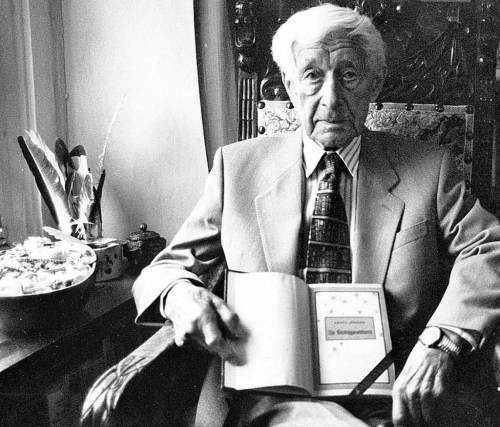
The Magic Cancellation of Crisis and the “Physiognomic Method” of Ernst Jünger
Robert Steuckers
Ex: https://institutenr.orgJünger saw in the figure of the Arbeiter the central category around which the modern world, subjected to the planetary domination of technology, was called to organize itself, in “total mobilization” though and in labor. More precisely, a response adapted to the rise of nihilism in the modern era could be deployed through the technological mobilization of the world. With it, he salutes the advent of a new figure of man, modeled on the Nietzschean superman.
Among the adepts of Marxist ideology, very few have analyzed the thought of those they call “pre-fascist”, or outright “fascist”, including Ernst Jünger, who would evidently be one of the figureheads. Armin Steil is one of the rare Marxist ideologues who has analyzed the paths of Georges Sorel, Carl Schmitt, and Ernst Jünger with pertinence, depth, and especially clarity in his work Die imaginäre Revolte : Untersuchungen zur faschistischen Ideologie und ihrer theoretischen Vorbereitung bei Georges Sorel, Carl Schmitt und Ernst Jünger (The Imaginary Revolt: Inquiries on Fascist Ideology and its Preparation with Georges Sorel, Carl Schmitt, and Ernst Jünger).
Focusing on Der Arbeiter, Steil notes that Jünger’s logic, starting from his “fascism” or more precisely his “revolutionary conservatism,” is not a theoretical logic, a constructed logic, based on the observation of causes and effects, but a metaphorical, poetic, imagistic logic and language. Facing a chaotic socio-economic and political reality, facing the crisis of German society and culture, Jünger wanted to master its perverse effects, its dysfunctions through aesthetics: so his “fascism,” his “revolutionary conservatism,” would essentially be aesthetic in nature, contrary to Marxism, which molds itself on material realities and resolves crises by operating on socio-economic matters themselves, without idealist recourse, without recourse to transcendence or to an aesthetic. Steil very justly concludes: “The book [Der Arbeiter] wants to teach [men] to have a sovereign attitude in the face of social attitudes.” Cold, dispassionate, microscopic observation thus forms the “magic key” that would permit an elite to master the crises, to put an end to chaos and the corrosive disparities that hinder the proper functioning of societies that are subject to them.
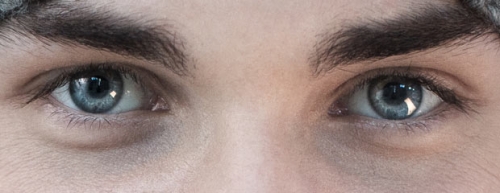
To be Hyper-Perceptive Eyes
The willing spirits that thus desire “to take the bull by the horns,” to act on the political terrain, to fight against crises and their effects, should not bind themselves to building a mechanical system of ready made ideas that perfectly match and fit together, but should be hyper-perceptive “eyes,” capable of describing the phenomena of everyday life: what Jünger calls the “physiognomic method.” It allows one to see the essence of a thing in its simple appearance, grasping the unity of essence and appearance, which is the “form” (Gestalt), invisible to all inattentive, distracted observers, not used to wielding the “physiognomic method” with the desired dexterity. All valuable, fruitful phenomena thus bear in themselves a “form,” more or less hidden, a potential force that it captures and puts in the service of a political or historic project. On the other hand, every phenomenon that only appears as “normal” is consequently a phenomenon without further “form”, without “force.” Such a phenomenon would be an early warning sign of decadence, a sign indicating a reshuffling of the cards, forms die, thus obeying a hidden logic, which prepares the advent of new forms, of unbroken forces.
The observation of the phenomena of everyday life, of the details of our daily settings, gives a glimpse of where the fall and death of forms manifest themselves: neon, garish lights, loud and artificial modern cities, are a patent indication of this fading of forces, masked by colors and intensities without real life. Modern traffic in the big cities burdens the pedestrian, the only physical being in this universe of concrete, asphalt, and metal, on the barely tolerated margins are the sidewalks, tracks reserved for the “least speedy.”

The “Arbeiter” uses the “Physiognomic Method”
So the “Arbeiter” is the figure that makes use of the “physiognomic method,” observes, deciphers, plunges into this universe of artifice to seek buried forces, in order to mobilize them for a purely imagined project, “Utopian” in the Marxian and Engelsian sense of the term, Steil explains. This recourse to the imaginary, as the Marxist Steil explains, proceeds from a logic of doubt, which aims to give meaning to that which does not have it, at any cost. It aims to convince us that behind the phenomena of decline, of de-vitalization, an “Order” and laws emerge, which are avatars of the one God refused by the advocates of historical materialism. This “Order”, this Gestalt, this “form”, integrates the infinite diversity of observations posed by people, but it is not, like in the case of historical materialism, a reflection of social relations, but rather a total vision, intuitive, going directly to the essence, that is to say the original form. It is not the objective and positive enumeration of causes and effects that allows one to decide and act, but, on the contrary, a piercing look what allows one to see and grasp the world as the theater where forms confront or cooperate with each other.
The “Arbeiter” is precisely the one who possesses such a “piercing look”, and who replaces the bourgeois, who reasons strictly in simple cause and effect. Steil notes the gap between this vision of the “Arbeiter” and the Marxist and empirical vision of the “Proletarian”: the figure forged by Jünger places himself high above socio-economic contingencies; while the proletarian conscious of his dereliction operates at the heart of these contingencies, without taking any distance, without detachment. The “high flight” of the Arbeiter, his aquiline perspective, gives him a mask: metallic or cosmetic, the gas mask of the combatant, the drivers helmet with the men, makeup with the women. Individual traits disappear behind these masks, as should individual human, all too human, imperfections disappear. The figures of the Arbeiter are certainly imaginary figures, excessively idealized, de-individualized and examined: they act like Prussian soldiers in the Frederician era of practice. Following their leaders, these lesser (but nevertheless necessary) avatars of the Arbeiter and the Prussian soldiers from the “war in lace” [Translator’s note: referring to the ornate uniforms worn by soldiers of the 17th and 18th century] certainly lose the imperfections of their individuality, but also abandon their doubts and disorientation: rules and Order are safety anchors offered by the new elite community of “Arbeiters,” virtuosi of the “physiognomic method.”
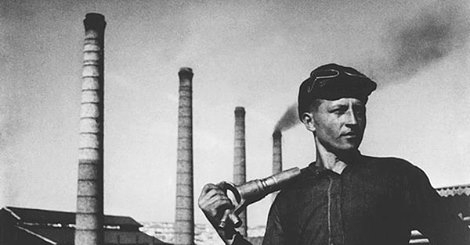
The Apparent Independence of the Proletarian
Steil protests that Order, as an imaginary projection, and the “physiognomic method” are instruments against the empirical and Marxist notion of “class struggle,” before clearly giving Jünger’s version: to leave the laborer, the worker, in the grasp of socio-economic contingencies is to leave him in a world entirely determined by the bourgeoisie, arising from the bourgeoisie and ultimately controlled by the bourgeoisie. By occupying a designated place in the bourgeois order, the worker only enjoys an apparent independence, he has no autonomy. Every attack launched against the bourgeois order from this apparent position is also only apparent, destined to be recollected and reinforce the establishment. “Theoretically, every move takes place in the context of an outdated social and human utopia; practically, each brings to dominion, time and again, the figure of the clever business man, whose art consists in bargaining and mediating,” writes Jünger. For Steil, this definition radicalizes the Sorelian vision of socialism, which desires to transform politics into pure means, without a limiting objective, inscribed in contingencies.

To Restore “Auratic” Work
A Marxist will see, in this idealism and in this purification of politics as pure means, an eliminations of politics, a will to put an end to the destructive violence of politics, which is only, in the Marxist view, “class struggle.” But technology operates to sweep away the dead forms in order to establish new forms following a planetary confrontation of extant forms, still endowed with more or less intact forces. So technology destroys residual or obsolete forms, it makes the permanent war of forms planetary and gigantic, but the “Arbeiter,” by coldly instrumentalizing the “physiognomic method,” gives a final form to technology (a desire that is never realized!). This final form will be artistic and the beauty emerging from it will have a magic and “sacral” function, like in so-called “primitive” societies. The restoration of these forms, writes Steil, will be achieved through the restoration of “auratic” work, eclipsed by technological standardization. The Aura, the impalpable expression of form, of the essence of represented phenomenon, restores the sacred dimension, proclaims the return of the cult of beauty, by qualitative replacement of the dead religiosity from the bourgeois era.
“Heroic realism,” the foundation of the new socio-political Order, will be carried by a dominant caste simultaneously exercising three functions: that of retainer of knowledge, that of new warrior forged during the battles of material in the Great War, and that of producer of a new aesthetic, a medium integrating social differences.
Armin Steil, in his Marxist critique of the “pre-fascism” of Sorel, Jünger and Schmitt, clearly lays out the essence of a work as capital as Der Arbeiter, where the mania for fabricating systems is refused in favor of great idealist affirmations, disengaged from the overly heavy contingencies of bourgeois society and proletarian misery. The Jüngerian path, in this view, appears as a disengagement from the yoke of the concrete, as a haughty retreat ultimately leading to a total but external domination of this concreteness. But in the piercing look, demanded by the physiognomic method, is there not, on the contrary, an instrument to penetrate concreteness, much more subtle than simple surface considerations of phenomena?
Reference: : Armin STEIL, Die imaginäre Revolte. Untersuchungen zur faschistischen Ideologie und ihrer theoretischen Vorbereitung bei Georges Sorel, Carl Schmitt und Ernst Jünger, Verlag Arbeiterbewegung und Gesellschaftswissenschaft, Marburg, 1984
01:40 Publié dans Littérature, Philosophie, Révolution conservatrice | Lien permanent | Commentaires (0) | Tags : littérature, littérature allemande, lettres, lettres allemandes, ernst jünger, méthode physiognomique, philosophie, philosophie politique, révolution conservatrice, allemagne |  |
|  del.icio.us |
del.icio.us |  |
|  Digg |
Digg | ![]() Facebook
Facebook
La destruction du “modèle suisse” en quatre étapes
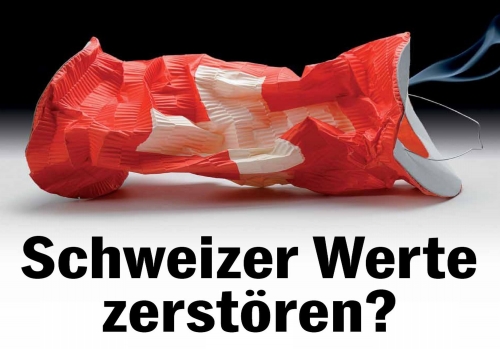
La destruction du “modèle suisse” en quatre étapes
Dans une démocratie directe le peuple est souverain. La séparation des pouvoirs entre l’exécutif (Gouvernement), le Législatif et le judicatif ainsi que le fédéralisme rendent impossible tout influence d’un groupement d’intérêt minoritaire. Voila pour la théorie.
En réalité, la politique suisse fait l’objet de diverses zones d’ombres. Mais la base du problème, c’est que le modèle Suisse se basant sur la démocratie directe, le fédéralisme, la neutralité et l’indépendance a été systématiquement démantelé.
1. La destruction de la neutralité
Avec la chute du mur de Berlin et la « fin de l’Histoire », un « Nouvel Ordre Mondial » semblait émerger. Fini l’affrontement entre les nations et la menace de la destruction mutuelle assurée par armes nucléaires. Le monde allait devenir un village global dans lequel l’économie capitaliste garantirait une hausse du niveau de vie pour tous.
Dans ce contexte, la Neutralité perpétuelle et armée n’aurait plus de sens. La victoire écrasante du modèle occidental sur son rival démontrait que pour réussir, il fallait adopter le libéralisme absolu. Inutile de se tenir à l’écart. Le « sonderfall » avait vécu. La Suisse devait rejoindre ce monde plein d’opportunités, de richesses et de croissance.
Etant donné que la population suisse tenait encore majoritairement à son modèle et que la gueule de bois qui suivait le « dimanche noir » (rejet de l’adhésion à l’EEE par le peuple et les cantons le 6 décembre 1992) empêchait le Conseil Fédéral d’avancer ouvertement, ce dernier en contradiction absolue avec la volonté populaire a décidé de suivre son agenda en cachette.
Une des décisions marquantes du Conseil Fédéral fut l’adhésion de la Suisse au programme de l’OTAN « Partenariat pour la Paix » (PPP). Cette décision ne fut PAS soumise au référendum facultatif, ce qui indique un déni démocratique de la part du gouvernement, a amené la Suisse dans la zone d’influence de l’OTAN.
Il va de soi qu’une participation à l’OTAN n’est pas compatible avec la neutralité perpétuelle de la Suisse et aurait dû être soumise au référendum facultatif. Qu’en est-il du PPP ? Cet organisation vise avant tout à créer des liens de partenariat et des échanges diplomatiques entre les Etats membres et l’OTAN. Or, une dépendance de ces Etats envers l’Alliance Atlantique peut clairement être démontrée. Ainsi, les normes militaires (équipements, calibres, organisation de l’armée…) doivent être adaptées à celles de l’OTAN. Le but du Partenariat pour la Paix est clairement de collaborer avec l’OTAN, en vue d’une adhésion.
La voie de l’internationalisme était donc bel et bien entamée par les perdants du 6 décembre 1992. A la fin du siècle, alors que l’OTAN - sans mandat des Nation-Unies et sans respect de sa propre charte qui interdisait une attaque en dehors du territoire de l’Alliance - attaquât la Serbie, le Conseil fédéral et le parlement suisse décidèrent d’autoriser l’envoi de troupes confédérées armées à l’étranger. Il s’agit ici bien d’un changement radical de paradigme dans la politique étrangère Suisse et d’un abandon de fait de la neutralité Suisse lors d’un conflit armé.
L’acceptation par le peuple de ce virage de la politique de sécurité en juin 2001 représente la plus grande entorse à la neutralité Suisse depuis 1848. Il était clair dorénavant que la Suisse, partenaire de l’OTAN, prendrait parti lors de certains conflits. La Neutralité est devenue une coquille vide de sens.
L’adhésion à l’ONU ne représente que la suite logique des événements. Les internationalistes ont gagné une manche : La Neutralité ne sera plus un pilier crédible pour le modèle Suisse. Pire encore, la Neutralité - désormais « active » - de la Suisse est utilisée pour permettre aux chefs du département fédéral des Affaires étrangères de se profiler sur la scène internationale.
2. La destruction du fédéralisme
Autre pilier du Modèle Suisse, le fédéralisme devait également être détruit. Seul un gouvernement central fort devait subsister afin de faciliter l’intégration de la Suisse dans les institutions internationales.
La Suisse est un Etat particulier. Les cantons sont souverains. Ils n’ont délégué à Berne qu’une partie de leurs affaires. Ce sont eux qui ont la liberté de gérer leurs affaires internes. L’Education n’est pas la même aux Grisons que dans le canton de Neuchâtel et les impôts sont différents de canton à canton. Berne ne gère que les affaires qui relèvent de l’intérêt supérieur,comme l’armée et la politique étrangère.
La destruction du fédéralisme commence en douceur : Les fusions de communes et la création de groupements communaux (« agglomérations ») disposant d’un parlement non-élu directement et doté de pouvoirs opaques (entre la commune et le canton) ont affaibli la base même du fédéralisme, la commune.
Puis les conférences des directeurs cantonaux se sont mises en place et ont commencé à édicter des normes qui rapidement sont devenues des lois cantonales. Une fois de plus la démocratie est contournée.
Puis il y a la tendance générale du parlement national à prendre de plus en plus de décisions qui relèvent de l’autorité cantonale. Ainsi, le droit fédéral remplace petit à petit le droit cantonal. Et les parlements cantonaux sont réduits à mettre en application des décisions qu’ils n’ont jamais prises.
3. La destruction de la démocratie
Que ce soit la destruction de la Neutralité ou du fédéralisme, la population n’a jamais été consultée. Cette évolution s’est faite en dessous du radar des simples citoyens. Certes, ils ont eu l’occasion de voter sur certains sujets partiels. Les fusions de communes doivent être adoptées par les citoyens. Mais dans ce cas, il n’y a jamais eu de débat de principe. On a réduit la question à la rentabilité et non à l’identité des villageois.
Et lorsqu’il y a eu des votes majeurs comme par exemple la question de l’adhésion à l’ONU, ou de l’envoi de soldats à l’étranger, une gigantesque machine de propagande gouvernementale s’est mise en route. Il ne s’agit pas de tracts et d’affiches, mais d’articles de presse, d’analyses et expertises de la part de « spécialistes » de reportages, de pressions politiques, d’interventions de personnalités publiques et de responsables de grandes entreprises, de l’implication du gouvernement dans la campagne et d’une communicqtion biaisée relayée par les médias d’Etat.
Un des exemples les plus flagrants est celui du débat sur les accords bilatéraux. Toute l’élite économique, médiatique, intellectuelle et politique s’est battue pour obtenir un OUI. Ce fut chose faite. Dans les médias les opposants n’avaient pas voix au chapitre. La démocratie directe ne peut pas survivre dans de telles conditions.
4. La destruction de la souveraineté
La souveraineté nationale est l’unique cadre dans lequel une démocratie directe peut exister. En même temps, la souveraineté nationale est le principal obstacle à une intégration de la Suisse dans des instances supranationales.
Depuis 1992, les perdants du vote sur l’EEE tentent par tous les moyens de faire adhérer la Suisse à l’Union Européenne. Les accords bilatéraux - avant tout la libre circulation des personnes - ont fait de la Suisse un «membre passif» de l’UE.
En plus d’affaiblir la démocratie directe, les élites politico-médiatiques prônent la reprise du droit Européen par la Suisse et la soumission de notre pays sous la jurisprudence de l’Union Européenne, notamment via un accord-cadre dont le contenu détaillé reste caché aux yeux des citoyens. Or, un Etat qui applique les lois étrangères sur son territoire n’est plus souverain. Il devient une colonie.
Malgré tous ces efforts menés par les élites suisses, la population ne veut pas adhérer à l’Union européenne. L’indépendance et la Neutralité de la Suisse ont toujours la cote au sein de la population. Mais ceci ne va pas empêcher les élites à poursuivre leur politique.
La fin du modèle Suisse ?
La pression que subit le modèle Suisse par les élites politiques, économiques, médiatiques et intellectuelles représente un grand risque pour les citoyens du pays. Le souhait d’en finir avec le modèle Suisse est bien réel au sein des coulisses du pouvoir helvétique. Il est urgent de réagir et d’empêcher nos élites d’atteindre leurs objectifs.
Le citoyen n’est libre que dans la démocratie directe. La démocratie directe n’est viable que dans un Etat souverain. La défense de la souveraineté suisse assure la liberté individuelle de tout citoyen. En 2018, ce combat pour nos libertés continuera de plus belle. La votation sur l’initiative pour l’autodétermination qui vise à assurer la prédominance de la constitution fédérale sur le droit international sera le prochain combat d’importance pour assurer un avenir en liberté pour tous les habitants de notre pays. Nous ne pouvons nous permettre de perdre ce combat!
Albert Leimgruber
2.11.2017
01:10 Publié dans Actualité, Affaires européennes | Lien permanent | Commentaires (0) | Tags : suisse, europe, affaires européennes |  |
|  del.icio.us |
del.icio.us |  |
|  Digg |
Digg | ![]() Facebook
Facebook
Redécouvrir et relire Proudhon avec Thibault Isabel

Les Entretiens de Métamag :
Redécouvrir et relire Proudhon avec Thibault Isabel
Thibault Isabel
Docteur ès lettres, philosophe, rédacteur en chef de la revue Krisis et collaborateur d’Éléments
Interviewé par Michel Lhomme
Ex: https://metamag.fr
Juste avant l’été, le rédacteur en chef de Krisis, Thibaut Isabel faisait l’événement dans les milieux de la dissidence avec la publication de son livre sur Proudhon, Pierre Joseph Proudhon, l’anarchie sans désordre, préfacé par Michel Onfray et publié aux éditions Autrement. Le romancier Alain Santacreu l’avait recensé pour Métamag et un colloque Krisis auquel nous vous avions conviés avait même été organisé à l’espace Moncassin dans le 15ème arrondissement.
Proudhon n’a jamais été aussi actuel et on attend avec impatience la sortie annoncée du prochain numéro de Nouvelle Ecole consacré à l’anarchiste français. C’était le moment opportun pour nous entretenir avec l’auteur Thibaut Isabel. Métamag.
Michel Lhomme : Votre dernier livre sur Pierre-Joseph Proudhon est sorti en juin. Pourriez-vous nous le présenter en quelques mots et surtout nous expliquer les raisons qui vous ont poussé à l’écrire ?
Thibaut Isabel : Depuis l’effondrement du communisme, le monde moderne vit dans l’idée qu’il n’existe plus d’alternative viable au libéralisme. « There is no alternative », disait déjà Margaret Thatcher. Or, nous oublions tout simplement que ces alternatives existent toujours, à condition d’en revenir au socialisme pré-marxiste, qui n’avait rien à voir avec le collectivisme stalinien. Proudhon offre une pensée contestataire à visage humain, incompatible avec le goulag et la dictature du prolétariat. Il nous permet ainsi de repenser le présent à la lueur des idéaux oubliés du passé. C’est pour cela qu’il est utile et qu’il nous faut absolument le relire.
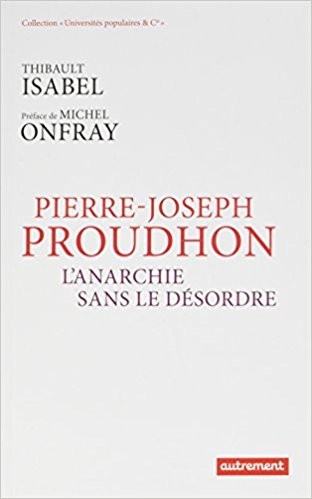 Proudhon est un autodidacte, il vient d’un milieu modeste et, toute sa vie, il devra travailler pour vivre. Il sera ouvrier, puis deviendra rapidement travailleur indépendant en gérant sa propre imprimerie. En quoi cela a-t-il influencé ses réflexions ?
Proudhon est un autodidacte, il vient d’un milieu modeste et, toute sa vie, il devra travailler pour vivre. Il sera ouvrier, puis deviendra rapidement travailleur indépendant en gérant sa propre imprimerie. En quoi cela a-t-il influencé ses réflexions ?
Proudhon avait horreur du salariat. Il trouvait humiliant d’avoir à travailler pour un patron, de ne pas pouvoir conduire soi-même sa propre activité professionnelle. La vertu cardinale était à ses yeux la responsabilité, l’autonomie. Tout homme devrait être maître de ses actes et de sa destinée. C’est pourquoi le philosophe bisontin nourrissait un amour sans borne du travail indépendant. Toute sa doctrine économique et politique visait à rendre le travail plus libre, pour affranchir les individus de la domination des puissants.
Proudhon – penseur de l’équilibre – est une référence pour des intellectuels venus d’horizons très divers. En quoi peut-on dire qu’il est transcourant, non conforme ? Quelles furent ses influences ? Ses héritiers ?
Proudhon n’était ni capitaliste, ni communiste. Or, toute la pensée politique du XXe siècle a été structurée autour de cette opposition du capitalisme et du communisme. Dès lors, la pensée proudhonienne nous paraît aujourd’hui inclassable, puisqu’elle n’est pas réductible à un camp clair et bien défini sur l’axe droite-gauche tel que nous le concevons. La plupart des héritiers de Proudhon échappaient eux-mêmes à ce clivage, comme le montrent très bien les non-conformistes des années 1930, notamment les jeunes intellectuels personnalistes rassemblés à l’époque autour d’Alexandre Marc. Quant aux auteurs qui ont influencé Proudhon, il faudrait à vrai dire citer tous les pionniers du socialisme : Cabet, Owen, Leroux, Fourier, etc. Nous avons tendance à oublier qu’il existait alors une vaste nébuleuse d’intellectuels antilibéraux de grand talent, qui n’étaient pas stricto sensu communistes.
Longtemps après sa mort, l’écrivain catholique Georges Bernanos a pu dire de la civilisation moderne qu’elle était avant tout « une conspiration universelle contre toute espèce de vie intérieure ». Quel point de vue Proudhon portait-il sur la Modernité et la philosophie du Progrès ?
Proudhon défendait le progrès social, mais il ne croyait pas au Progrès linéaire de la civilisation. Il était même convaincu que le progressisme revêtait un caractère utopique et chimérique. C’est pourquoi il se disait simultanément partisan du progrès et de la conservation, parce que nous avons en réalité besoin des deux pour faire fructifier sainement toute société.
Proudhon a tenu des propos particulièrement virulents à l’encontre des institutions ecclésiastiques mais se montrait en parallèle très conservateur sur le plan des mœurs. Quel était son rapport à la question religieuse ? Et à la morale ? Était-il puritain ?
Proudhon était passionné par la religion. D’abord élevé dans le catholicisme par sa mère, il s’est affranchi progressivement de la mystique théiste pour s’orienter vers une sorte de panthéisme, sous l’influence notamment de la franc-maçonnerie traditionnelle (et non bien sûr de la franc-maçonnerie laïque). Proudhon se sentait très proche des vieilles cultures païennes, et il s’intéressait en particulier au taoïsme, voire à la religion amérindienne.
Sur la question des mœurs, il défendait des positions extrêmement rigides, que plus personne ou presque ne pourrait reprendre à son compte aujourd’hui, même dans les milieux catholiques traditionalistes. C’est à mon avis l’aspect de sa pensée qui a le plus vieilli. Il est en tout cas intéressant de constater que cet auteur, généralement considéré comme le pionnier de la gauche radicale en France, aurait objectivement été classé à l’extrême droite s’il avait vécu de nos jours, en défendant les idées morales qui étaient les siennes à l’époque.
D’ailleurs, dans De la justice dans la révolution et dans l’Église, puis dans La Pornocratie (paru incomplet et posthume), Proudhon peut bien être considéré comme misogyne. Alors, sa vision de la Femme et sa critique de la féminisation de la société sont-elles intrinsèques à ses réflexions économiques et politiques ?
Non, très franchement, je ne le pense pas. Les propos de Proudhon sur les femmes, quoi qu’effectivement assez lamentables de mon point de vue, n’ont pas eu d’incidence sur sa pensée philosophique profonde. J’irais même jusqu’à dire qu’il n’a pas réussi à étendre les principes de sa philosophie à la question des sexes, ce qui lui aurait permis de préfigurer l’idée d’« équité dans la différence », chère à bien des féministes différentialistes contemporaines. Proudhon en était resté à l’infériorité constitutive des femmes, qu’il ne nuançait que dans de rares développements de ses livres. Il restait en cela fidèle à la vision extrêmement patriarcale de la bourgeoisie industrielle.
Les réflexions proudhoniennes sur la propriété sont aujourd’hui particulièrement galvaudées et, d’ailleurs, on ne cite très souvent Proudhon en terminale que pour son rejet de la propriété privée. Pourriez-vous donc nous éclairer un peu plus sur sa fameuse phrase « La propriété c’est le vol » ?
Proudhon était au fond un défenseur acharné de la petite propriété privée, qui lui semblait constituer un frein au développement du grand capital. Quand Proudhon affirme que « la propriété c’est le vol », il dénonce seulement l’accumulation du capital, c’est-à-dire le fait que les petits propriétaires indépendants soient peu à peu remplacés par de grands propriétaires capitalistes. Je reconnais que les premières œuvres de Proudhon restaient quelque peu ambigües sur cette distinction, mais les dernières œuvres rectifieront le tir d’une manière tout à fait explicite.

On dit Proudhon socialiste, anarchiste, vous parlez d”’une anarchie sans désordre” mais peut-on également le considérer comme un précurseur de la Décroissance ou un écologiste ?
Au sens propre, non, car, au XIXe siècle, il n’y avait guère de sens à réclamer davantage de frugalité pour lutter contre la dévastation écologique, dont les effets n’étaient pas aussi visibles qu’aujourd’hui. En revanche, Proudhon a incontestablement été l’un des grands précurseurs de la décroissance par sa philosophie générale. Il remettait en cause l’accumulation de richesses pour elle-même et privilégiait le qualitatif au quantitatif. On trouve également chez lui un rapport à la nature quasi-religieux. En comparaison des écologistes actuels, je dirais qu’il était moins conscient des dangers de l’industrie que nous ne le sommes, mais qu’il avait anticipé la critique de la société de consommation.
La Commune de Paris, survenue quelques années après sa mort, peut-elle être vue comme une tentative (consciente ou inconsciente) de mise en pratique de certaines de ses idées ?
Assurément, d’autant que la majeure partie des communards étaient proudhoniens ! N’oublions pas que, jusqu’à cette époque, Proudhon était beaucoup plus célèbre que Marx… En revanche, la défaite de la Commune va mettre un coup d’arrêt à l’expansion du proudhonisme en France : beaucoup de proudhoniens perdront d’ailleurs la vie au cours des événements de cette période, ou s’exileront à l’étranger. Je sais d’ailleurs que vous avez vous-même beaucoup travaillé sur l’influence de Proudhon en Amérique latine, par exemple. Mais c’est sans doute en Russie que Proudhon aura l’influence la plus profonde et la plus pérenne, notamment sur les intellectuels populistes (Herzen, Tchernychevski, etc.).
Proudhon fut député socialiste et affirma qu’« il faut avoir vécu dans cet isoloir qu’on appelle l’Assemblée Nationale pour concevoir comment les hommes qui ignorent le plus complètement l’état d’un pays sont presque toujours ceux qui le représentent ». Cette phrase est pour le moins assassine ! Quelle était sa vision générale de la Démocratie et de la Politique ?
Proudhon n’aimait guère la démocratie parlementaire, qu’il jugeait technocratique et potentiellement dictatoriale. Il n’aurait eu aucun goût pour les « présidents jupitériens », j’imagine. Proudhon défendait plutôt les démocraties locales et décentralisées, où le peuple s’exprime d’une manière beaucoup plus directe et participe au pouvoir.
Proudhon considérait que la France est « le pays du juste milieu et de la stabilité… en dépit de son esprit frondeur, de son goût pour les nouveautés et de son indiscipline » et qu’en chaque français sommeille « un conservateur doublé d’un révolutionnaire ». Quel rapport Proudhon, fier franc-comtois, défenseur du fédéralisme et du principe de subsidiarité, entretenait-il à la Nation française et à l’État français, voire au conservatisme et à la Tradition ?
Proudhon n’aimait pas beaucoup la France, qu’il associait au jacobinisme, à la centralisation et au mépris des particularismes locaux. Il était plutôt régionaliste. Mais son fédéralisme impliquait la coexistence de différentes échelles de pouvoir, où la France aurait pu servir de strate intermédiaire entre la région et l’Europe. Proudhon estimait que la nationalité française était une abstraction et qu’elle ne correspondait à aucune patrie charnelle. Seules les régions avaient réellement grâce à ses yeux, parce qu’elles sont plus proches de l’homme. Le terroir, c’est ce qui nous entoure de manière immédiate et façonne concrètement notre manière de voir le monde.
On peut tout à fait considérer que Proudhon était conservateur. L’hostilité à l’État bureaucratique et la défense des corps intermédiaires se retrouvait en des termes très proches chez des auteurs comme Burke, Tocqueville ou Burckhardt, qui ont compté parmi les chefs de file de la tradition conservatrice. Proudhon estimait que le progrès allait de pair avec la conservation : prétendre progresser sans rien conserver de ce qui mérite de l’être serait une grave erreur. On ne doit pas faire table rase du passé. Dire que Proudhon était un tenant de la Tradition serait en revanche excessif. Ses positions spirituelles le rapprochaient des religions anciennes, du christianisme hérétique et de certains aspects de l’ésotérisme, mais il n’en avait qu’une connaissance très parcellaire.
Quels conseils de lecture donneriez-vous à un jeune militant ? Quels sont les œuvres à lire en priorité de Pierre Joseph Proudhon ?
C’est assez difficile à dire. Proudhon écrivait beaucoup, et il avait la fâcheuse habitude de diluer sa pensée dans d’interminables digressions qui ont parfois mal résisté à l’épreuve du temps. Ses derniers livres sont à mon avis les meilleurs, et les plus synthétiques. Je recommanderais donc surtout Du principe fédératif, qui condense ses principales réflexions politiques autour de la démocratie.
Dans son livre sur la Justice, Proudhon adopte un ton kantien dans ses analyses (la justice comme respect d’autrui et égalité fondamentale) et cela nous rappelle beaucoup la théorie contemporaine de la Justice de John Rawls. On sait qu’à John Rawls vont répondre les communautariens américains et canadiens des années 1970-1980. Or, ne décèle-t-on pas chez Proudhon cette même tension, mais ici réunie dans la même œuvre, entre l’idéal de Justice et le Bien commun ? Est-ce le principe fédératif qui est appelé à résoudre cette tension de manière politique ou les communautés autonomes ? Et quelles communautés ? Sur quelles identités se fonderont-elles à l’avenir ?
Dans la première partie de sa vie, Proudhon est resté enferré dans une conception déontologique de la Justice qui devait en effet beaucoup à Kant, ne serait-ce qu’indirectement. Il épousera aussi brièvement une vision du monde positiviste, sous l’influence de Saint-Simon et de Comte. Mais il s’en dégagera au profit d’une perspective qu’on pourrait qualifier de pragmatiste, et même de pré-nietzschéenne par moments. Son livre sur la Justice est le témoin de cette phase de transition.
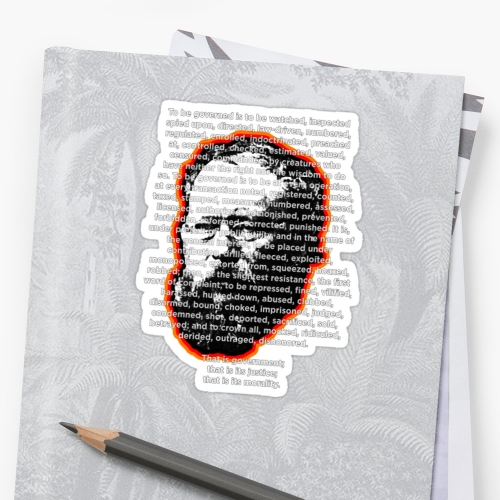
Le dernier Proudhon aurait à mon avis clairement penché en faveur de la pensée communautarienne défendue par Charles Taylor, Michael Sandel et Alasdair MacIntyre (et non en faveur de John Rawls). Sa remise en cause du contrat social individualiste devient d’ailleurs patente vers la fin de sa vie, même s’il restera toujours sensible à la défense des libertés individuelles contre l’oppression communautaire. Proudhon considère en définitive que l’individu et le groupe doivent s’équilibrer : la communauté ne doit pas opprimer les personnes singulières, mais les individus ne doivent pas non plus se retrancher de la collectivité. L’ensemble de notre vie politique et sociale gagnerait en d’autres termes à s’inscrire dans un processus fédéral : l’homme est ouvert à ses communautés, et les communautés sont ouvertes à la fédération. Au lieu de mettre l’accent sur un pouvoir technocratique centralisé, comme dans l’Union européenne du XXIe siècle, on laissera l’essentiel des prérogatives aux pouvoirs communaux. Pour autant, le fédéralisme établira un lien national et continental entre les différentes communes, afin d’assurer l’alliance de l’Un et du Multiple.
En matière d’identité, enfin, le philosophe défendait les identités concrètes contre les identités abstraites. Cela signifie qu’il accordait la prééminence au local contre le global. La nation, à ses yeux, n’était qu’une première étape vers un processus de globalisation plus large. C’est en ce sens que Proudhon était anti-nationaliste et favorable aux régions. Le cœur du pouvoir mérite de rester entre les mains des citoyens. Seule la commune peut y pourvoir.
Thibaut Isabel, Pierre-Joseph Proudhon, l’anarchie sans le désordre, préface de Michel Onfray, Autrement Paris 2017, 18,50.
Thibault Isabel: Proudhon l'anarchiste, penseur pour 2017?
01:05 Publié dans Entretiens, Livre, Livre, Théorie politique | Lien permanent | Commentaires (0) | Tags : pierre-joseph proudhon, proudhon, thibault isabel, entretien, socialisme, anarchisme, fédéralisme, théorie politique, 19ème siècle, politologie, sciences politiques |  |
|  del.icio.us |
del.icio.us |  |
|  Digg |
Digg | ![]() Facebook
Facebook


